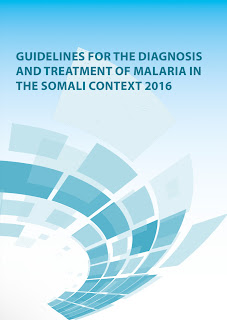𝐂𝐥𝐢𝐦𝐚𝐭𝐞 𝐜𝐡𝐚𝐧𝐠𝐞 𝐡𝐚𝐬 𝐩𝐫𝐨𝐟𝐨𝐮𝐧𝐝 𝐢𝐦𝐩𝐚𝐜𝐭𝐬 𝐨𝐧 𝐡𝐮𝐦𝐚𝐧 𝐡𝐞𝐚𝐥𝐭𝐡 𝐚𝐜𝐫𝐨𝐬𝐬 𝐯𝐚𝐫𝐢𝐨𝐮𝐬 𝐚𝐬𝐩𝐞𝐜𝐭𝐬
Climate change is no longer a distant threat; it's a reality that is already affecting human health in profound ways. From extreme weather events to altered disease patterns, the impacts of climate change on public health are widespread and multifaceted. In this article, we will explore the various dimensions of how climate change is shaping the health landscape and discuss strategies to mitigate its adverse effects.
Injuries and Fatalities: One of the most immediate consequences of climate change is the increase in injuries and fatalities caused by extreme weather events. Floods, storms, and heatwaves are becoming more frequent and severe, leading to tragic loss of life and extensive property damage.
Mental Health Impacts: Climate-related disasters can take a significant toll on mental health, causing anxiety, depression, and post-traumatic stress disorder (PTSD) among affected individuals. The loss of homes, livelihoods, and communities can leave lasting psychological scars that require long-term support and intervention.
Asthma and Cardiovascular Disease: Air pollution, exacerbated by climate change, is a major contributor to respiratory conditions like asthma and cardiovascular diseases. Rising temperatures and increased levels of atmospheric pollutants pose a significant threat to public health, particularly in urban areas with high levels of traffic and industrial activity.
Heat-related Illness and Death: As global temperatures continue to rise, so too does the risk of heat-related illnesses and deaths. Elderly individuals, children, and those with pre-existing health conditions are especially vulnerable to heat exhaustion, heatstroke, and other heat-related conditions, highlighting the urgent need for effective heat mitigation strategies.
Changes in Vector Ecology: Climate change is altering the distribution and behavior of disease-carrying vectors such as mosquitoes and ticks, leading to the spread of vector-borne diseases like malaria, dengue fever, and Lyme disease. These changes pose a significant threat to global health security and require coordinated efforts to control vector populations and prevent disease transmission.
Forced Migration and Conflict: Environmental degradation, exacerbated by climate change, can lead to forced migration, displacement, and civil conflict as communities compete for dwindling resources. These population movements can strain healthcare systems, exacerbate food insecurity, and fuel social unrest, further exacerbating the health impacts of climate change.
Increasing Allergens: Climate change is leading to the proliferation of allergenic plants and fungi, triggering allergic reactions and exacerbating respiratory conditions like asthma. Pollen seasons are becoming longer and more intense, posing challenges for allergy management and exacerbating health disparities among vulnerable populations.
Water and Food Supply Impacts: Changes in precipitation patterns and water availability are affecting food security and water quality, leading to malnutrition, diarrheal diseases, and waterborne illnesses. Vulnerable communities, particularly those in low-income countries, are disproportionately affected by these impacts, highlighting the need for equitable solutions to address climate-related health disparities.
In response to these challenges, governments, healthcare providers, and communities must work together to implement comprehensive strategies to mitigate the health impacts of climate change. This includes reducing greenhouse gas emissions, strengthening healthcare systems, enhancing disease surveillance and response capabilities, promoting sustainable development practices, and fostering international cooperation to address the global nature of climate change.
By taking decisive action to address the health impacts of climate change, we can build more resilient and sustainable communities, protect the most vulnerable populations, and create a healthier future for generations to come.



Comments